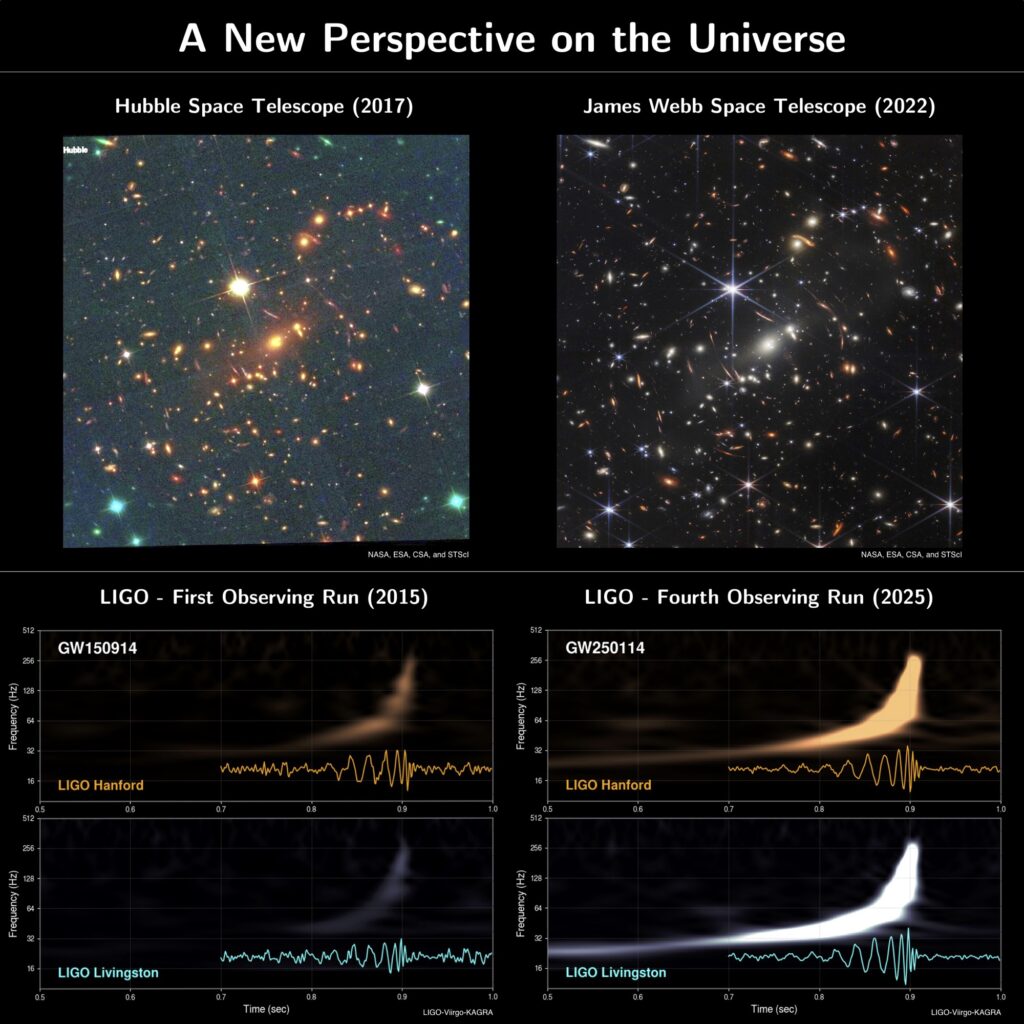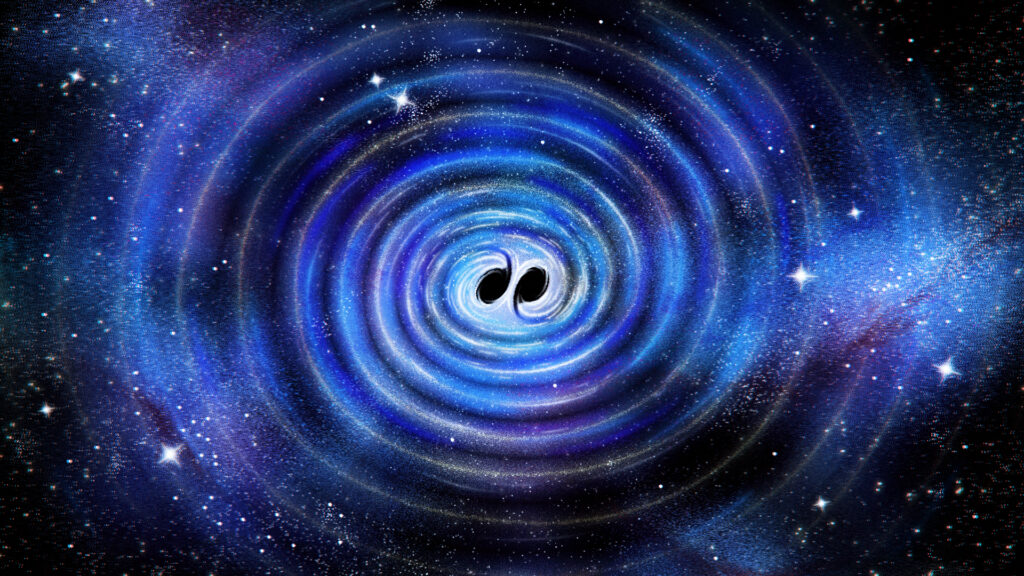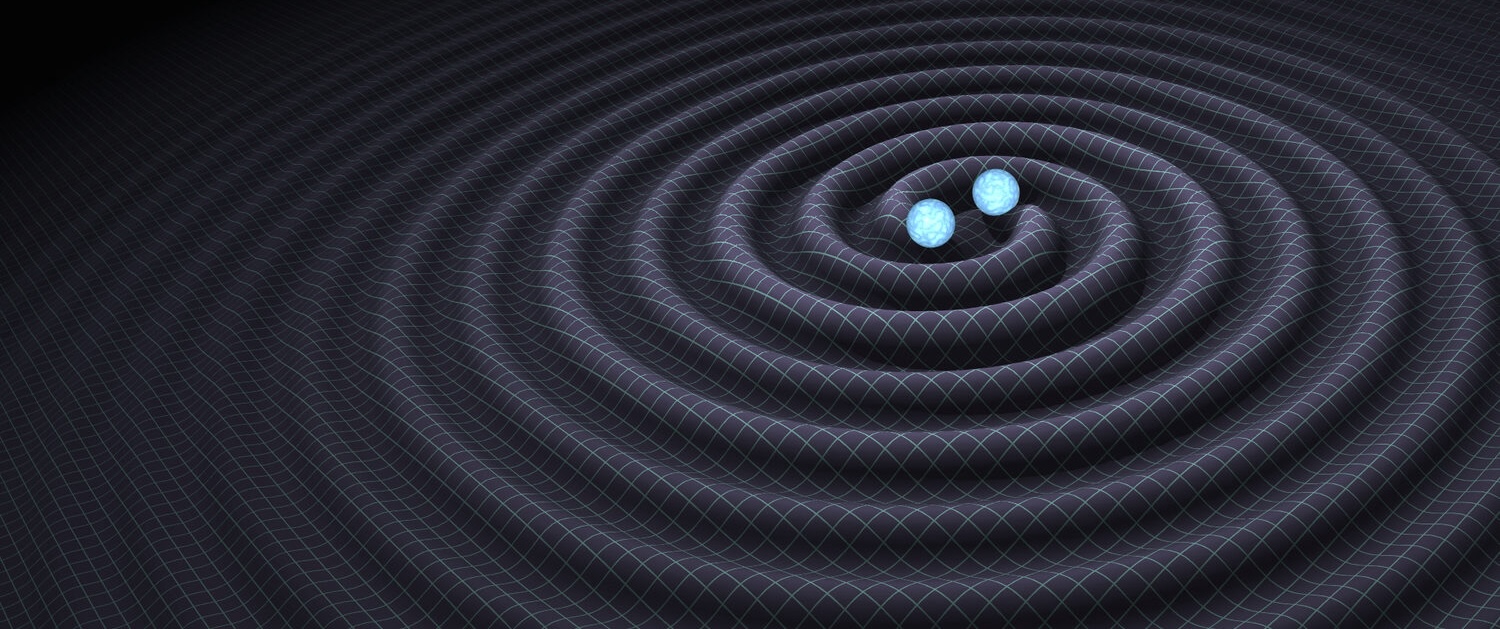On September 10, 2025, the LIGO-Virgo-KAGRA Collaboration announced the discovery of GW250114, the highest SNR (signal-to-noise) ratio event observed to date. This signal originated from the coalescence of two black holes with near-equal masses (34 and 32 solar masses) and low spins. The high SNR of this event allowed for the measurement of two quasinormal modes of the remnant black hole, confirmation of Hawking’s area theorem, and other precision tests of general relativity. Additional information can be found in the publications, companion papers, science summaries, and other resources below.
The announcement of GW250114 comes approximately 10 years since the discovery of GW150914, the first source directly detected with binary black holes. Both events have similar masses and distances. But thanks to 10 years of technological advances reducing instrumental noise, the GW250114 signal is dramatically clearer.

Publications & Documentation
- Publication : GW250114: Testing Hawking’s Area Law and the Kerr Nature of Black Holes (Phys. Rev. Lett., 135, 111403 (2025) ). [pdf download from LIGO DCC] [arXiv version].
- Press Release.
- Science Summary [pdf flyer].
- Companion Papers:
- Publication: Black Hole Spectroscopy and Tests of General Relativity with GW250114 (submitted for publication). [pdf download from LIGO DCC] [arXiv version]
See also the associated science summary [pdf flyer].
- Publication: Black Hole Spectroscopy and Tests of General Relativity with GW250114 (submitted for publication). [pdf download from LIGO DCC] [arXiv version]
- See the main ligo.org detection page for further resources.
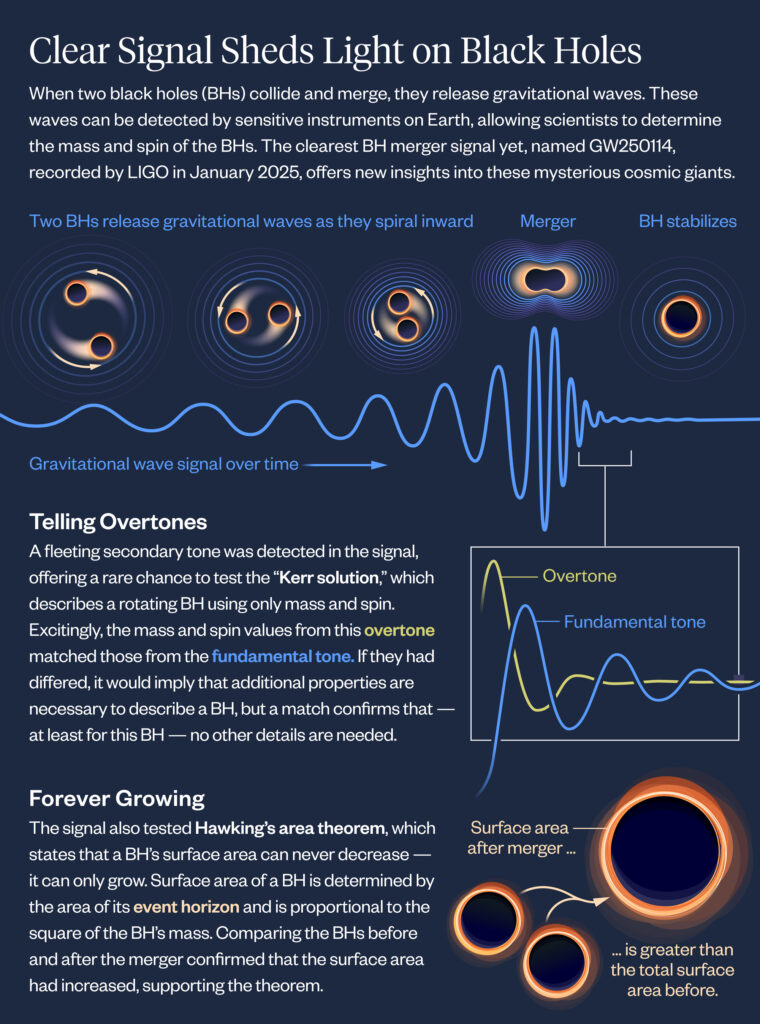
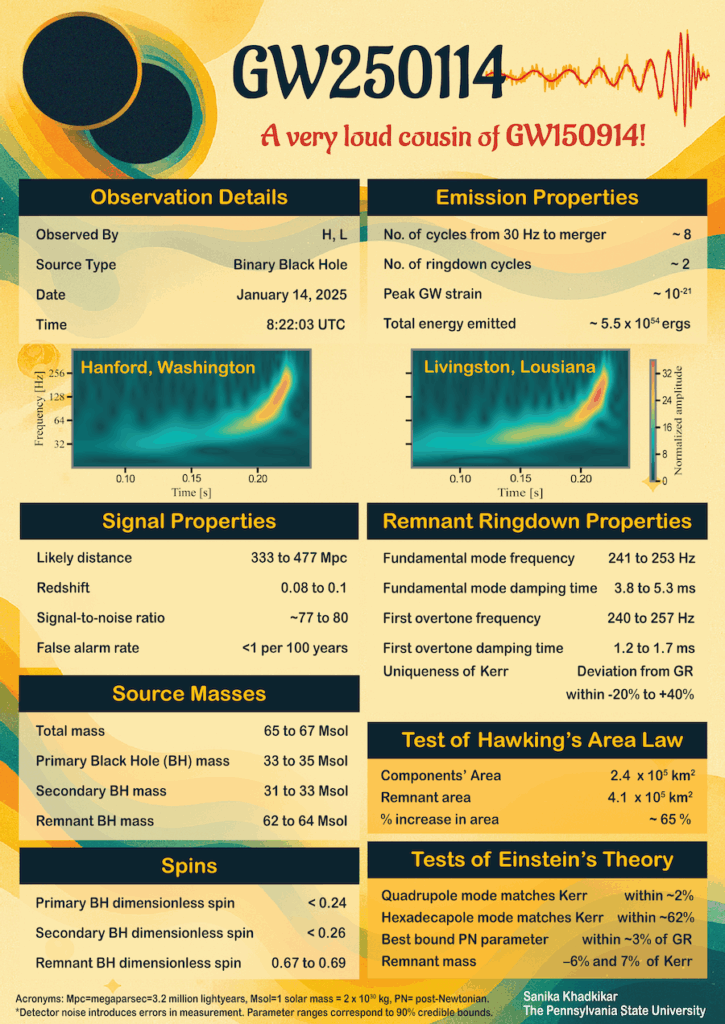
Audio comparison of GW250114 and GW150914. The visualization illustrates each signal’s increasing frequency with time, producing a “chirp” sound. Each detection plays twice: at the original frequencies and then with a 30% increase in pitch (to make the chirp easier to hear). Brighter colors indicate a large signal-to-noise ratio. Both signals came from colliding black holes with similar masses. But notice how much quieter the background noise is behind GW250114 compared to GW150914, an indication of how LIGO’s sensitivity has dramatically improved over the past decade. [Credit: LIGO/Derek Davis (URI)]
Additional Images & Videos
Numerical relativity simulation of GW250114. The blue and white surface shows a two-dimensional slice of the gravitational waves spiraling outward as the black holes orbit one another. The observed gravitational-wave signal from GW250114 is shown in white at the bottom. For comparison, the gray line shows much noisier data from LIGO’s first gravitational-wave observation, GW150914. While the amplitudes of these signals are comparable, significant improvements in detector sensitivity over the past decade have vastly reduced the amount of noise present in GW250114 relative to GW150914. [Credit: Deborah Ferguson, Derek Davis, Rob Coyne (URI) / LIGO / MAYA Collaboration.
Simulation performed with NSF’s TACC Frontera supercomputer.]
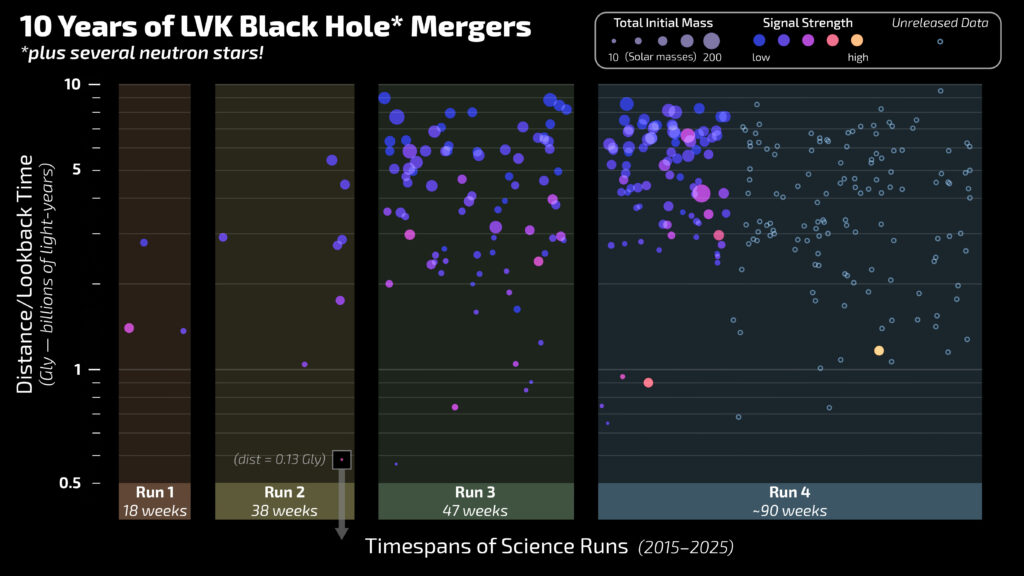
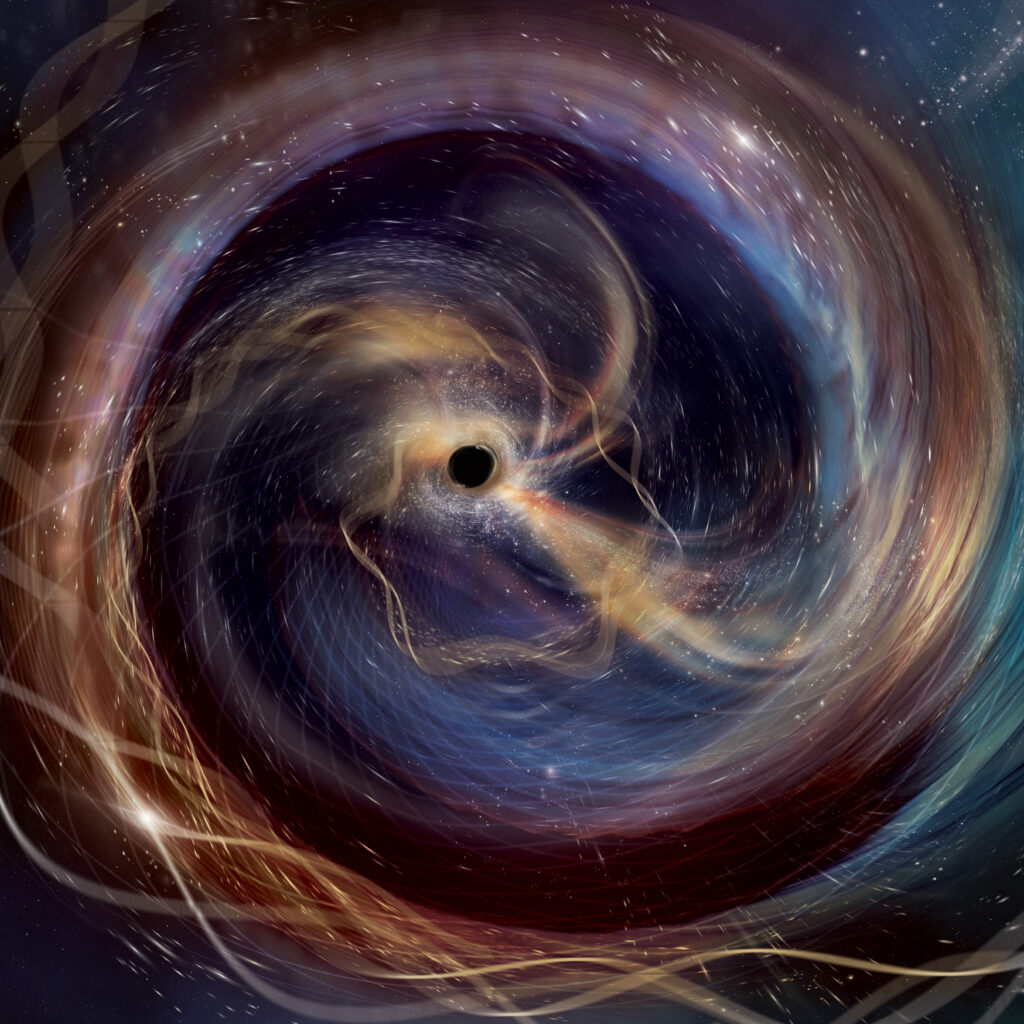
Visualization of a binary black hole merger consistent with the gravitational-wave event GW250114. The first part of the animation shows the inspiral and merger of the two black holes, with a representation of the gravitational waves emitted in the equatorial plane. A few milliseconds into the ringdown phase, the gravitational wave representation is separated into the two modes of the ringing remnant black hole that were identified in the GW250114 observation: the quadrupolar fundamental mode (labeled “First tone”) and its first overtone (“Second tone”). It also shows a predicted third tone (with a hexadecapolar pattern) that the data place limits on. [Credit: H. Pfeiffer, A. Buonanno (Max Planck Institute for Gravitational Physics), K. Mitman (Cornell University)]
